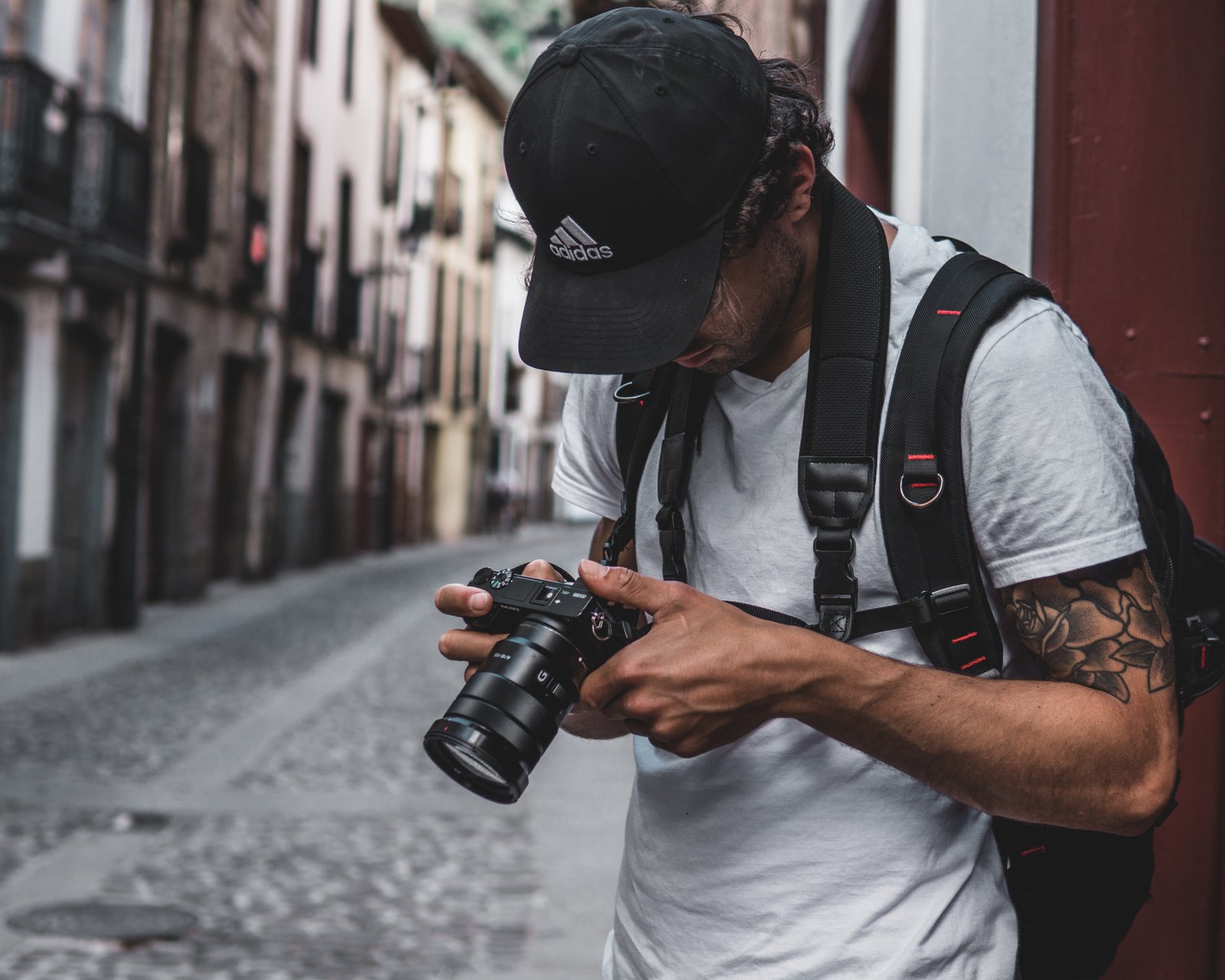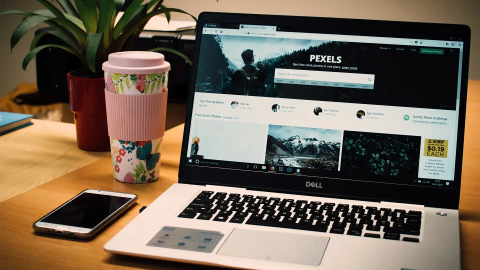
A Sony phone can always be recognized, and the Sony Xperia 1 V is no exception. In recent generations, they have had a textured rear that provides better grip than the corresponding glossy glass. They are taller and slimmer than other phones with comparable-sized displays. Additionally, they all share the identical design, with the exception of variations in port and camera placement that only professionals can tell apart the top-of-the-line Xperia 1 from the Xperias 5 and 10. A phone that blends in with those at the lower end of the spectrum may have trouble with this since part of owning a flagship smartphone is having other people find out you have one, asking you about it, and letting you brag about it.
However, the Xperia 1 V deserves its position at the top of the hierarchy of the best camera phones, thanks to its strong internals, high-resolution display and superior cameras. In addition, its price is slightly more than the Samsung Galaxy S23 Ultra and slightly less than the iPhone 14 Pro Max, both of which have a larger screen but the same amount of storage.

| Key Specs | |
|---|---|
| Chipset: | Snapdragon 8 Gen 2 |
| RAM: | 12GB |
| Storage: | 256 or 512GB plus microSDXC |
| OS: | Android 13 |
| Screen: | 6.5in OLED, 120Hz, 1644 x 3840 pixels, 21:9 aspect ratio, 643ppi |
| Cameras: | 48 MP, f/1.9 wide, 12 MP, f/2.3 tele zoom, 12 MP, f/2.2 ultrawide, 12 MP, f/2.0 front |
| Connectivity: | 5G, Wi-Fi 6E, Bluetooth 5.3, GPS, NFC, USB 3.2 Type-C, headphone socket |
| Dimensions: | 165 x 71 x 8.3 mm |
| Weight: | 187g |
Design And Screen

The fifth generation Xperia 1 is very similar in appearance to its predecessor. They are basically identical devices, except for the way the LED flash on the camera cartridge moves. Ours is black and has a rather glossy Gorilla Glass display on the front, but the sides and back, which are protruding and rough, look matte.
Although the entire object is made of glass, the textured back looks like it's made of plastic because we're used to thinking of glass as shiny. This is unfortunate as it detracts from the image of luxury it gives off, even though you'd probably put it in a case. After all, who wants to rock something worth over $1,200 unprotected? Smartphones will reportedly always have the problem of getting fingerprints from the sweaty and greasy hands of their avid users.
However, you can get it wet. The actual IP rating is a bit fuzzy, as Sony's website shows both IP65 and IP68. Water resistance also looks promising, as the phones are tested by 'gently' submerging them in 1.5 metres of tap water for 30 minutes. This suggests it will undoubtedly keep the dust out. Nothing in Sony's spec sheet suggests that the phones actually passed these tests, and the company explicitly warns against fully submerging the device - but electronics and water have never been good bedfellows.
The display has a high resolution of almost 4K and a correspondingly high pixel density. Individual pixels have no chance of being seen on this display, and the density of around 600 pixels per inch puts it ahead of rivals from Apple and Samsung. It displays 100% of the DCI P3 colour gamut and, like the best monitors for video editing, has a maximum refresh rate of 120Hz.

The position of the buttons is typical for an Android phone; there is the volume rocker and a power button, which is slightly recessed and houses the fingerprint reader on the right side and top of the device respectively. A camera shutter button is located below, which will be discussed in more detail later. The USB-C connector and SIM/Micro SD tray are located at the bottom, while the 3.5mm headphone jack is located at the top.
Performance

| Sony Xperia 1 V benchmark scores | |
|---|---|
| Geekbench 6: | Single-core: 2,032 |
| Row 1 - Cell 0 | Multi-core: 5,434 |
| Row 2 - Cell 0 | GPU: 8,670 |
| Row 3 - Cell 0 | Machine learning: 603 |
| PC Mark 10: | Work 3.0: 12,417 |
| Battery test: | 15h04m |
The Xperia 1V's Snapdragon chipset is currently the best chipset on the market, and while it significantly outperforms the iPhone 14 Pro in benchmarks, it's still no slouch. The Samsung Galaxy S23 Ultra, one of the most powerful smartphones on the market right now, outperforms both the OnePlus 11 and Samsung Galaxy S23 Ultra in Geekbench's single- and multi-core tests.
When you use it, there's absolutely no slowness whatsoever. While Mighty Doom's loading bar scrolls quickly across the screen and the game itself is as fluid as can be, a programme like Video Pro, which as a complex piece of software you might expect to come to life like an old diesel engine, pops up on the screen in seconds. The handling of the phone is quite remarkable, as it should be given its cost.
Inside the Xperia 1 V is a 5,000mAh battery that can be charged wirelessly and with a 30W fast charger. While the fast charging is a little slower than the 45W you'll get with the Galaxy S23 Ultra, it still outperforms Apple's solution. However, the Xperia doesn't come with a charger.
In our tests, battery life was just over 15 hours, which is a notable improvement over the Galaxy S23 Ultra. If you accept eMarketer's estimate that adults use their phones for three hours and 43 minutes each day, you can see how that adds up to three days between charges if you factor in standby time. The benchmark test simulates continuous use.
Cameras

Sony has improved the sensors in the Xperia 1's cameras since the previous generation. A 48MP 1/1.35" Exmor T for the mobile sensor and a small f/1.9 Zeiss lens with a 24mm equivalent focal length are now the building blocks of the primary camera.
As long as you can provide enough light, the images from this camera, reduced to 12MP as it is now, are amazing. This is still a phone camera, after all. While Sony has integrated Android's night mode into its app for the first time, it doesn't achieve the impossible, as image quality degrades as light increases.
Most of the time, when you switch on a smartphone camera, a white circular shutter button appears on the screen and the process is fully automatic. And as long as you are in Basic mode, you can also get it from here. A virtual dial that switches modes is located at the top of the screen, similar to the PASM dial on DSLR or mirrorless cameras. To enter one of the other modes, press the shutter button on the outside of the phone's shell to change the settings exactly as if you were in aperture priority, manual or one of the other popular modes. You can shoot raw files and even the focusing points light up in green squares, as on Sony Alpha cameras.
It's good to have everything, but since a mirrorless camera typically has external dials, it all becomes a bit confusing. With features such as the S-Cinetone picture profile (also found on Sony cameras such as the Alpha 1, A7S III and FX3), which aims to mimic the look of the Sony Venice camera, the 1 V is being positioned as useful even for serious filmmaking. But these features are all scattered throughout Sony's Pro apps, and you'll need to sit down and learn them before using them in anger. S-Log provides less dynamic range than 3, but does a better job of compensating for noise in the film, eliminating the need for colour grading. Rumour. The high-resolution OLED display looks great when watching HLG HDR or 4K videos at up to 120 frames per second, which can be shot with Video Pro.
There are other cameras, of course; this is a flagship phone from 2023, so there are three. As well as the front-facing and telephoto 12MP cameras, the latter has a zoom lens capable of 5.2x magnification at the expense of a small aperture. But none of these sensors can match the vibrant colour reproduction of the primary camera.
Price
There is no escaping the cost. Despite the high price, it could be argued that this phone offers nothing that a much lower-cost model doesn't. The amount of processing power it packs into its slim body is proof that it does it faster and smoother, and the screen is gorgeous to look at.
For the same price as this phone, you can get a Google Pixel 7a and a Google Pixel Tablet, or buy six Nokia G42 5G phones.






No Comments Yet